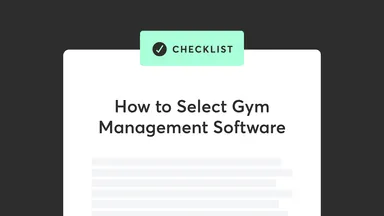Mindbody Checklist
How to Select Fitness Management Software
Last updated: August 6, 2025

Checklist
Whether you're operating a dance, martial arts, or Pilates studio, it takes more than quality fitness classes and good customer services to remain competitive. To be successful in today's fitness industry, you need fitness management software that aligns with your specific needs and goals.
Enhance Your Studio with Fitness Management Software
With so many options available, finding the right fitness studio software can take time and effort. If you're unsure what key factors you should be looking for when selecting a management platform, we've got you covered.
We've compiled this checklist to help guide you in your search and choose fitness management software that can:
- Simplify daily tasks, such as lead management, class scheduling, or client management
- Improve the client experience
- Help you understand how your business is performing

Checklist



